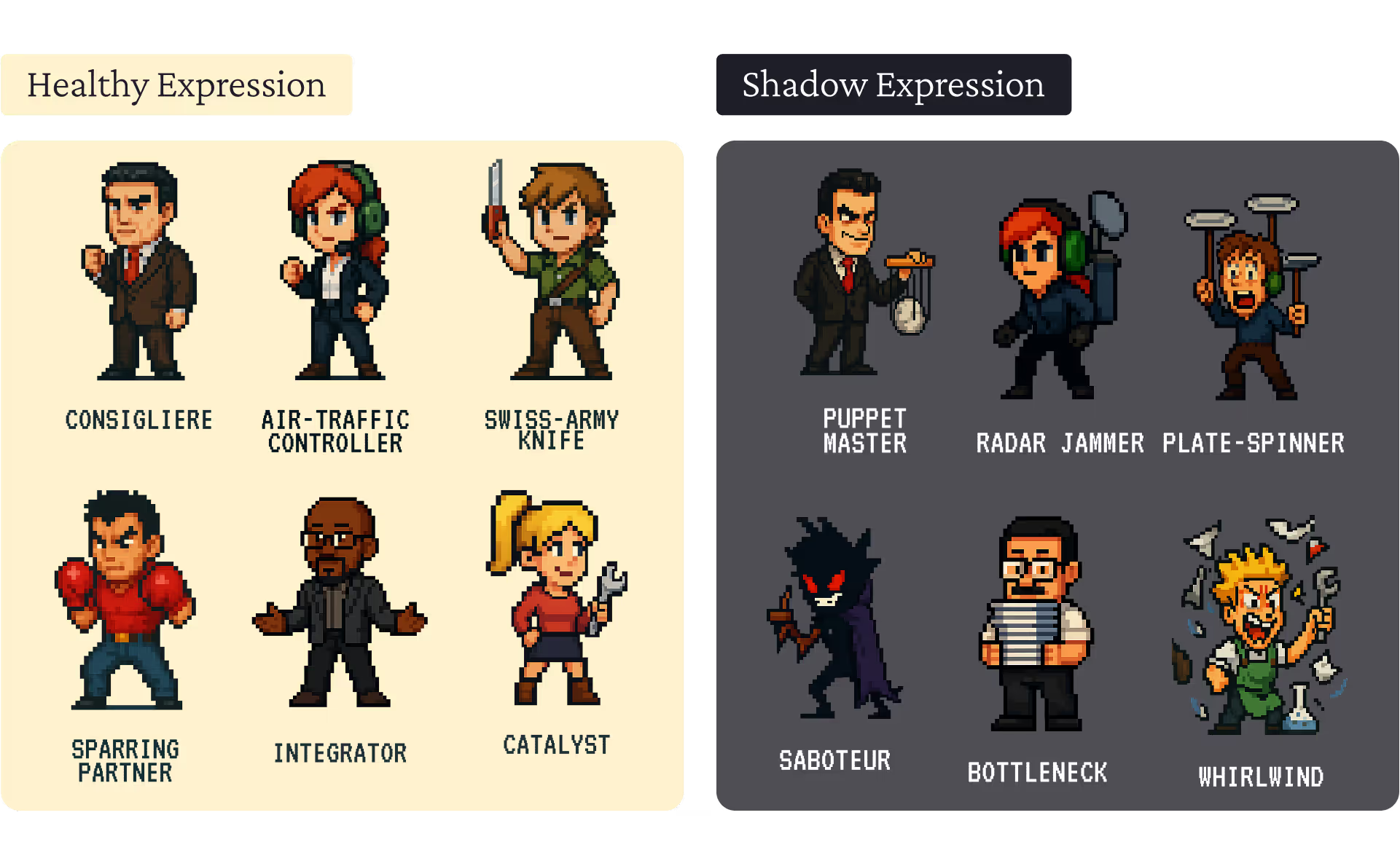Introduction: The Rise of the Modern Chief of Staff
The Chief of Staff (CoS) role has exploded in popularity across industries and geographies over the past decade. Once viewed primarily as a political or military function, today’s CoS plays a vital role at startups, enterprises, government agencies, universities, and nonprofits alike. But while the title is increasingly common, the job itself remains notoriously ambiguous.
In many ways, this ambiguity is the point. The modern CoS is a versatile operator, a trusted advisor, and a strategic glue that holds leadership teams together. They don’t just execute initiatives; they help shape them. They don’t just support the CEO; they extend their reach and amplify their impact.
As hybrid work, digital transformation, and AI reshape the workplace, the Chief of Staff is emerging as one of the most adaptable and future-proof roles in the executive suite.
What is a Chief of Staff? Role Definition & Scope
At the Chief of Staff Network, we define the CoS as the primary strategic operator reporting directly to a senior executive, often the CEO. While responsibilities vary widely, most Chiefs of Staff focus on three core areas:
- Strategic alignment: driving prioritization, OKRs, planning cycles, and communication between the Principal and their leadership team.
- Operational execution: owning internal projects, ensuring cross-functional accountability, and stepping into gaps across the org.
- Communication & filtering: managing stakeholder relationships, serving as a proxy or gatekeeper for the Principal, and synthesizing information for executive decisions.
Think of the CoS as either the hourglass (managing up and down, consolidating and distributing insight) or the Swiss Army Knife (a flexible generalist tool for whatever is needed most).
The Chief of Staff Leveling Framework adds clarity to the role by mapping key competencies across six levels – from Analyst to CXO. While responsibilities shift with seniority, a few themes remain consistent:
- At Level 1-2, Chiefs of Staff manage their own workstreams and help implement strategy, often focused on running key recurring meetings and coordinating small projects.
- At Level 3-4, they begin influencing strategic decisions, managing cross-functional teams, and anticipating risks through data analysis and planning.
- At Level 5-6, they operate as key influencers on strategic decisions, model the impact of strategy on financial outcomes, and act as senior advisors to the executive team.
Across all levels, core skills include adaptability, communication, problem-solving, and cross-functional leadership. The framework underscores the evolution from task execution to strategic foresight and organizational influence.
Further reading: McKinsey: Anatomy of the Chief of Staff Role
Explore the framework: Chief of Staff Leveling Framework
Titles, Reporting Lines, and Ambiguity: Why No Two CoS Roles Are the Same
While some CoS carry the title explicitly, others may be called Director of Strategic Initiatives, Head of Special Projects, Founder’s Associate, or even VP of Operations. What unites them is less the title and more the function: “filling the white space” between their Principal’s intent and organizational execution.
This ambiguity offers freedom and flexibility but comes with challenges: unclear authority, shifting expectations, and a lack of standard career paths. Many Chiefs of Staff report to one leader but are expected to influence many others without direct authority — leading through trust and EQ, not hierarchy.
Why the Role is Evolving: Forces Driving Change
Several macro trends are transforming what it means to be a Chief of Staff today:
- Digital transformation: As companies continue to adopt new digital systems, Chiefs of Staff are being tasked with overseeing large-scale transformation initiatives. They coordinate between business functions and technology teams, evaluate software vendors, and ensure smooth rollout and adoption across the org. Digital fluency is core to the role.
- AI and automation: The CoS is increasingly becoming an AI orchestrator, identifying use cases for automation, piloting AI tools, and integrating digital agents into team workflows. According to the Chief of AI Report from the Chief of Staff Network, over 70% of CoS respondents are actively exploring or implementing AI tools in their orgs. This shift requires Chiefs of Staff to lead not only adoption but also change management and ethical governance.
- Remote and hybrid work: The move to distributed teams has shifted how organizations communicate and collaborate. Chiefs of Staff are now responsible for designing intentional communication cadences, remote operating models, and asynchronous decision-making structures. They're often the ones ensuring alignment in increasingly fragmented environments.
- Pace of change: With business environments evolving faster than ever, leaders rely on their CoS to act as early-warning systems surfacing patterns, assessing risks, and enabling quick pivots. This places a premium on systems thinking, bottoms-up management, and adaptive execution.
CoS roles are evolving from project managers to change agents, from fixers to future-thinkers.
Further reading: Forbes on Redefining Leadership for Hybrid Work*
Learn More: Chief of AI Fellowship
Skills That Set Great Chiefs of Staff Apart
Modern Chiefs of Staff need a unique blend of what Josh Bersin calls "power skills", the behavioral, not technical, capabilities that drive impact:
- Strategic thinking: seeing the whole system and surfacing root causes
- Project and change management: from Gantt charts to Kanban to agile retros
- Stakeholder alignment: mapping interests, building coalitions
- Communication: writing, speaking, synthesizing complex ideas simply
- Influence without authority: using trust, relationships, and reputation to drive action
- Curiosity and adaptability: staying ahead in a rapidly changing world
Read More: Josh Bersin on Power Skills,
Read More: Why Chiefs of Staff Need Power Skills More Than Ever
Level Up: Explore Chief of Staff Power Skills
Data Snapshot: The Chief of Staff by the Numbers
Chief of Staff roles remain lucrative among other generalist positions. Based on the 2024 CoS Salary Reports by the Chief of Staff Network:
- Average base salary: $131K (global); $144K in North America and Western Europe
- Salary by level:
- Level 1-3 (Associate): $125K
- Level 4-5 (Sr. Manager): $169k
- Level 6 (Executive-level): $186K
- Equity and bonuses:
- Median equity value: $1025K
- Average bonus: ~$33K (12–25% of base)
- Correlation: Seniority and company size directly increase compensation
Read the full report: 2024 Chief of Staff Salary Report
AI & the New Frontier: The Augmented Chief of Staff
As AI tools move from novelty to necessity, Chiefs of Staff are increasingly expected to operate at the intersection of human judgment and machine capabilities. The modern CoS is shaping how their organizations work with AI.
In our Chief of AI Report, over 70% of respondents said they were experimenting with AI tools. The most common uses included streamlining meeting preparation, automating repetitive reporting tasks, and synthesizing large volumes of internal data.
Aaron Kalman, CoS at Lightricks, emphasized in his essay that successful AI adoption isn’t about picking the right tools, it’s about enabling a discovery mindset across teams. He championed a “bottom-up experimentation” approach where each function explored AI use cases autonomously, guided by CoS-led facilitation and coordination.
Key responsibilities emerging in this augmented model include:
- Identifying automation opportunities across departments and internal workflows
- Piloting AI agents for scheduling, data triage, summarization, research, and planning
- Acting as the connective tissue between product, data, and leadership
- Ensuring ethical and strategic adoption, balancing experimentation with governance
The CoS is becoming the AI orchestrator alongside the CEO and CTO (the AI Triad) in the Office of the CEO overseeing the convergence of human work and machine workflows.
Further reading: The Future of the Chief of Staff Role: When Machines Become Agents
Challenges & Tradeoffs
While the Chief of Staff role offers unmatched exposure and impact, it also comes with unique challenges. Many of them are structural.
- No playbook: Every CoS role is bespoke. There are few established blueprints, especially in fast-moving startups. As a result, Chiefs of Staff are constantly defining and redefining their own scope.
- No team: Many CoS operate as solo contributors, even as their remit spans entire companies. Without a team to delegate to, they’re often managing high-stakes projects with limited leverage.
- Emotional labor: The CoS is frequently the “emotional shock absorber” of the org. You’re holding the psychological weight of your Principal, managing politics between teams, and often running point on tough conversations. Credit isn’t always a given for these types of initiatives.
- Career ambiguity: The CoS title carries weight internally, but can be hard to translate externally. Is it a launchpad to GM, COO, or founder? Or a plateau? That answer is different in every org.
Additional Reading: Chief of Staff Pathways Report
What Comes Next: The Evolving CoS Model
The most effective Chiefs of Staff today are:
- Hybrid generalists with depth in at least one domain whether operations, comms, finance, product, or data.
- System builders who design how information flows and how decisions get made.
- Cultural architects, trusted not only by the CEO but also by the teams executing vision day-to-day.
- Executive coaches, capable of helping their Principals see blind spots and scale leadership capacity.
In early-stage startups, hybrid Chiefs of Staff often run product launches, shape hiring plans, or even step in as interim execs. In mature companies, they might oversee OKRs, run executive offsites, and influence enterprise-wide strategy.
As technology changes the pace and structure of work, hybrid CoS roles are becoming the connective tissue of modern organizations. Less behind the scenes, more at the table.
Read More:
The Generalist Advantage: Why the Future Belongs to Multi-Skilled Operators
Final Thoughts
The Chief of Staff is one of the most flexible, future-forward roles in business today. It’s also one of the most misunderstood. As AI, hybrid work, and organizational complexity grow, so too does the value of a great CoS.
If you’re a current or aspiring Chief of Staff, invest in the skills that matter: strategic judgment, influence, systems thinking, and adaptability. These are your power skills.
Explore more: Chief of Staff Launchpad Program | Chief of AI Fellowship | Chief of Staff Power Skills





.avif)
.avif)








